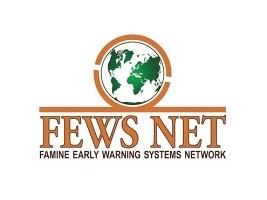|
||||||||||||||||||
|
|
Haiti - Agriculture : Food Security Outlook in Haiti until January 2023 11/09/2022 10:21:40
Evolution of the agricultural situation: Mixed in most regions of the country, the spring harvests have been completed, except for the Center department, which started a little later. Currently, taking advantage of regular and favorable rains, farmers, especially in mountain areas, are engaged in soil preparation activities as part of the summer/autumn campaign, which still consists of maize and beans, in addition to seasonal crops. such as roots and tubers and banana. Harvesting activities of the real tree, avocado, pineapple and citrus are underway, particularly in the South and Grand'Anse, already supplying the markets. It should be noted that farmers in the Great South continue to benefit from the support (seeds, inputs, fertilizers, finance, etc.) of various organizations operating in the region following the earthquake of August 14, 2021 https://www.haitilibre.com/en/news-34479-haiti-flash-magnitude-72-earthquake-in-the-nippes-updated-10am.html In addition, food security conditions continue to be impacted by inflation and low household income. In addition, the poor performance of the spring harvests negatively impacts the launch of the summer/autumn campaign, given that 70 to 80% of the inputs used come from the spring campaign. This leads to a low availability of seeds, leading to an increase in their cost on the market. Farmers face difficulties in financing their campaigns, the income from the sale of agricultural products being below average. Thus, the demand for labor turns out to be very low, resulting in incomes for agricultural workers also below average. Sources of income: Very poor households in rural areas, having missed the spring campaign, and those in precarious neighborhoods of Port-au-Prince, plagued by insecurity (IPC Phase 3), continue to adopt crisis strategies such as the intensification of the sale of charcoal or wood and female animals, the consumption of early harvests or food with low nutritional value, and begging, among others, to maintain the normal level of their food consumption. Outlook until January 2023: With the spring harvests being below average, households have very little or no reserves for the period from August to September. The activities of the summer/autumn campaign are therefore limited because of the insufficient income from the spring agricultural campaign to finance them normally. Thus, the performance of the summer/autumn campaign will be compromised, leading to harvests, and even incomes, below average. The reduced supply of local products, below-average incomes, and the still high level of commodity prices will negatively affect poor households' access to food and therefore their purchasing power. Thus, the poorest households will adopt crisis strategies, in particular the reduction in the number of daily meals, the reduction in consumption by adults in favor of children, the use of unusual activities such as day sales in private homes for doing laundry, shoe shine in urban areas, etc. Some communes (Irois, Anse-d'Hainault, Dame-Marie, Bonbon) and especially some others in the southern coastal region will be in Crisis (IPC Phase 3), while others (Corail, Pestel, Roseaux, etc...), less dependent on the market, having succeeded in the spring campaign and benefiting from the support of a few organizations in support of livelihoods, will be Stressed (IPC Phase 2). The second period (October 2022 to January 2023) coincides with the winter campaign. but also with the harvests of seasonal crops such as pigeon pea, stump weight and unknown pea. Despite the more or less favorable agro-climatological conditions for these campaigns, the losses resulting from the spring campaign will negatively affect the production of these seasons, which already represent a small contribution to national agricultural production. Food consumption will depend almost entirely on market purchases. Low purchasing power, due to high food prices and insignificant incomes, will continue to impact the food situation of the poorest. Livelihoods will not have to change significantly either. Admittedly, the end-of-year festivities represent a source of additional income. Nevertheless, the rise in the prices of petroleum products and cereals (particularly rice and flour), in an unfavorable international context, does not lend itself to an improvement in the food security situation in the area. Poor and very poor households will therefore have to resort, once again, to crisis strategies apart from sustained humanitarian assistance aimed above all at recovering their livelihoods. Learn more about the Integrated Food Security Phase Classification (IPC) : Phase 1 : Usually adequate and stable food access with moderate to low risk of sliding into Phase 3, 4, or 5. Phase 2 : Moderately / Borderline Food Insecure Borderline adequate food access with recurrent high risk (due to probable hazard events and high vulnerability) of sliding into Phase 3, 4, or 5. Phase 3 : Acute Food and Livelihood Crisis Highly stressed and critical lack of food access with high and above usual malnutrition and accelerated depletion of livelihood assets that, if continued, will slide the population into Phase 4 or 5 and / or likely result in chronic poverty. Phase 4 : Humanitarian Emergency Severe lack of food access with excess mortality, very high and increasing malnutrition, and irreversible livelihood asset stripping. Phase 5 : Famine / Humanitarian Catastrophe Extreme social upheaval with complete lack of food access and / or other basic needs where mass starvation, death, and displacement are evident. HL/ HaitiLibre
|
|
|
Why HaitiLibre ? |
Contact us |
Français
Copyright © 2010 - 2024 Haitilibre.com |



